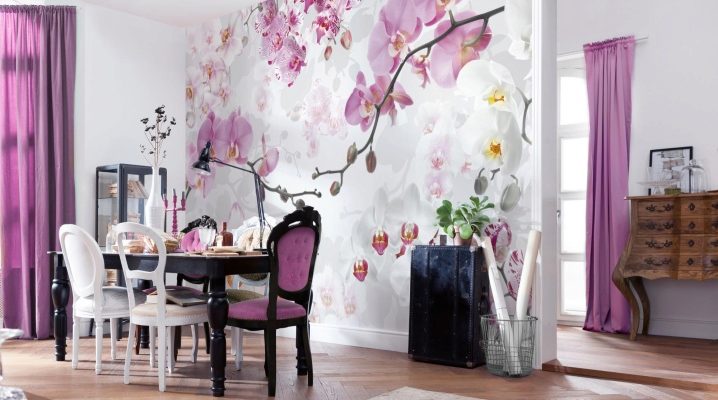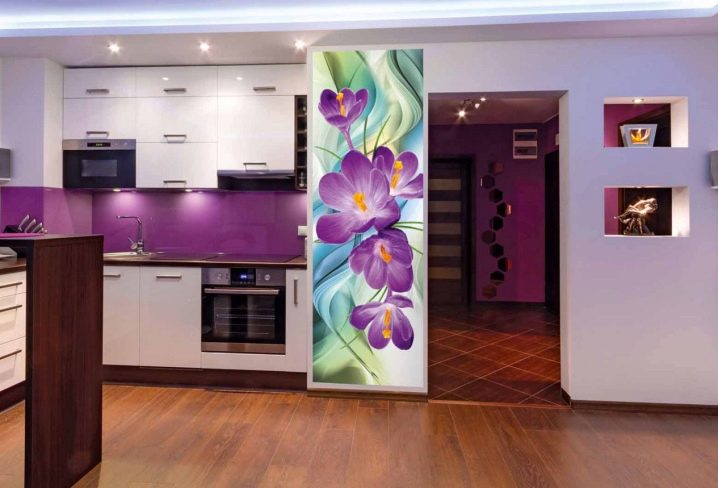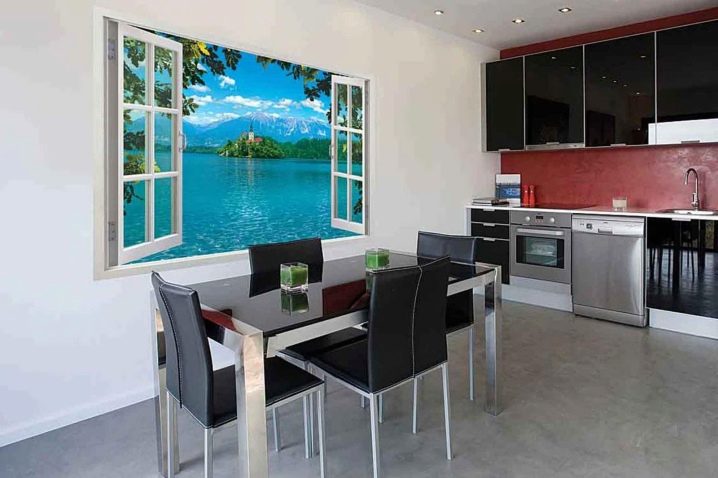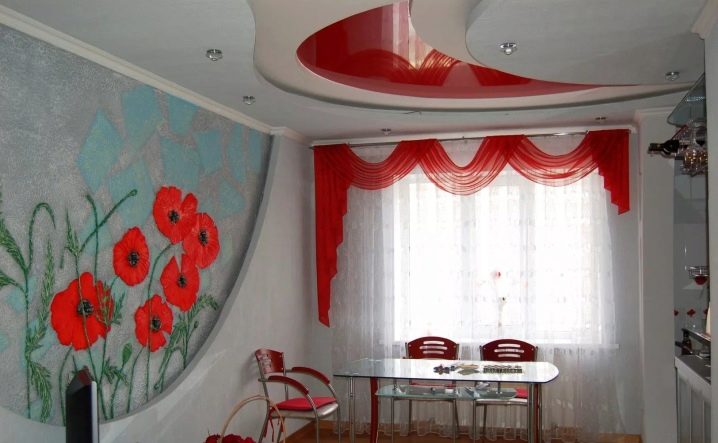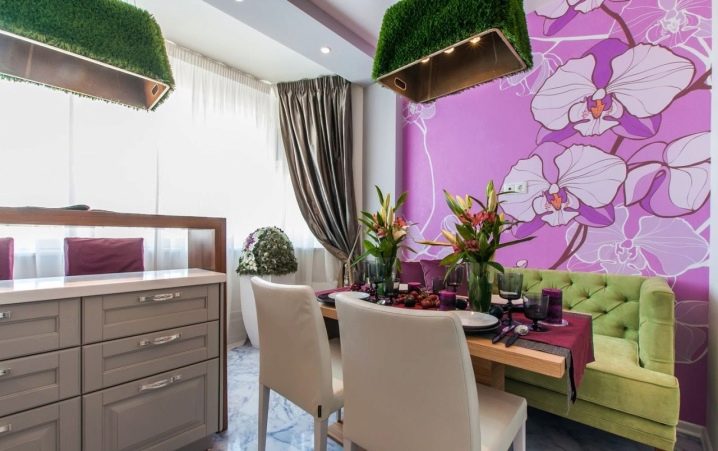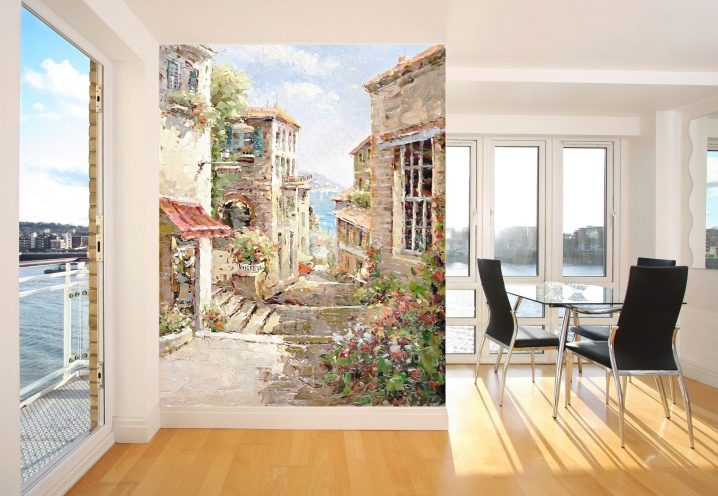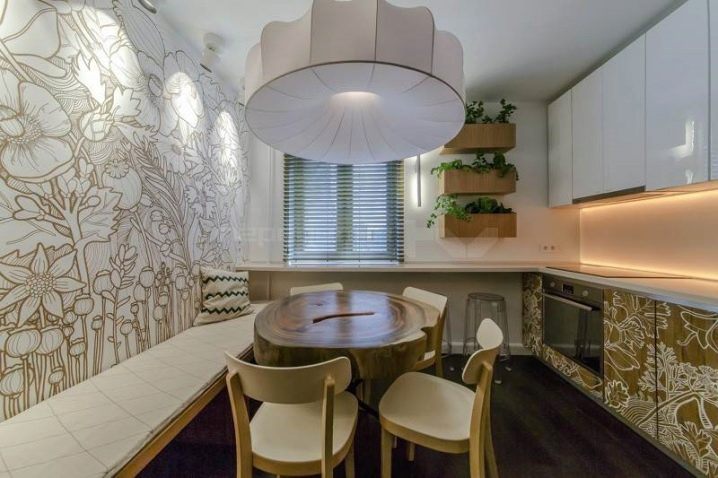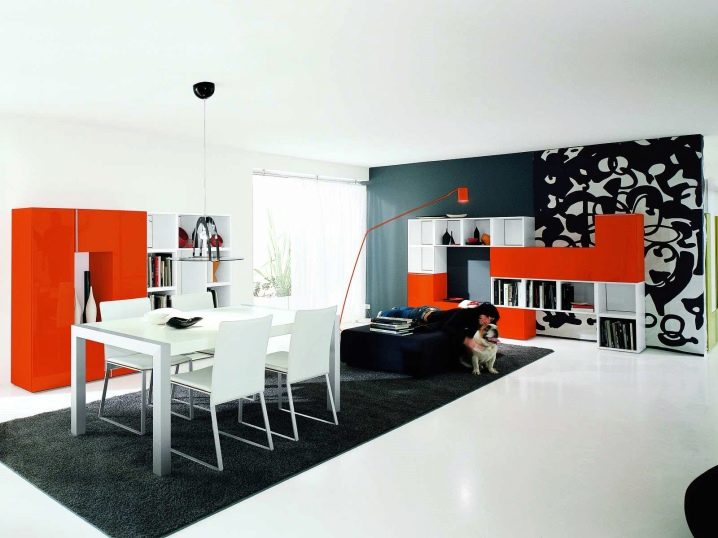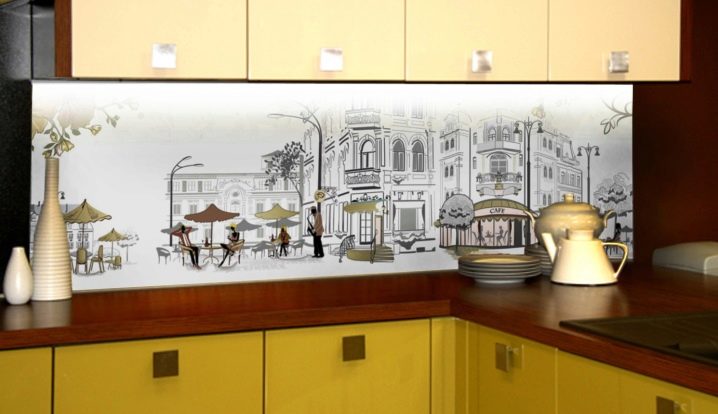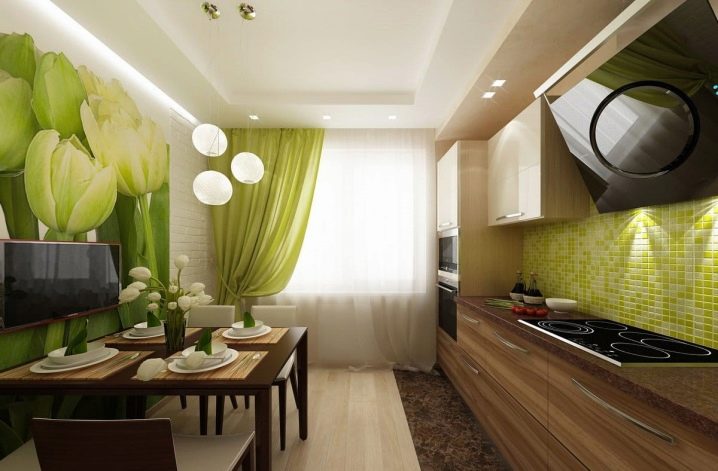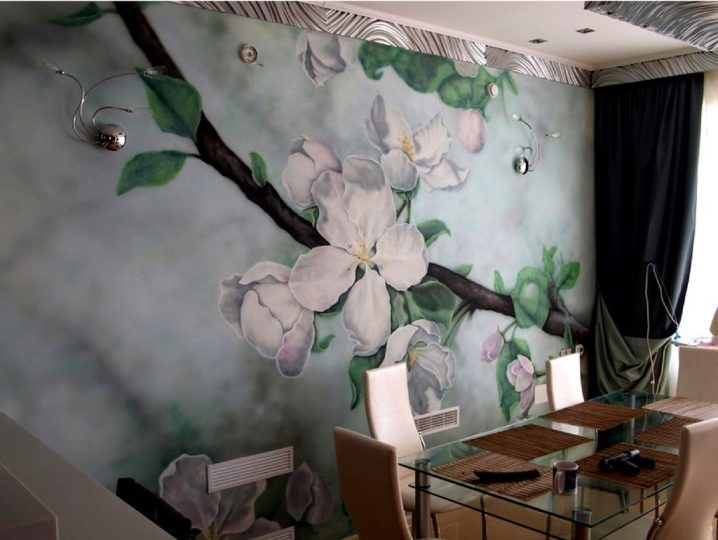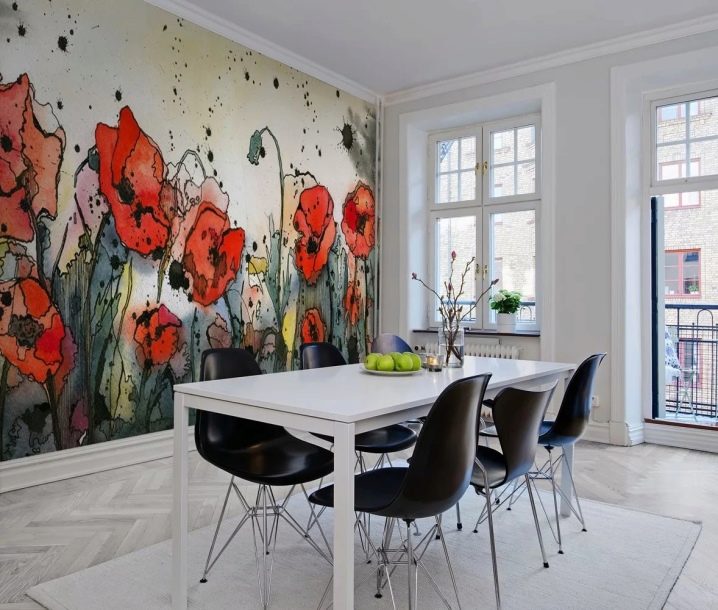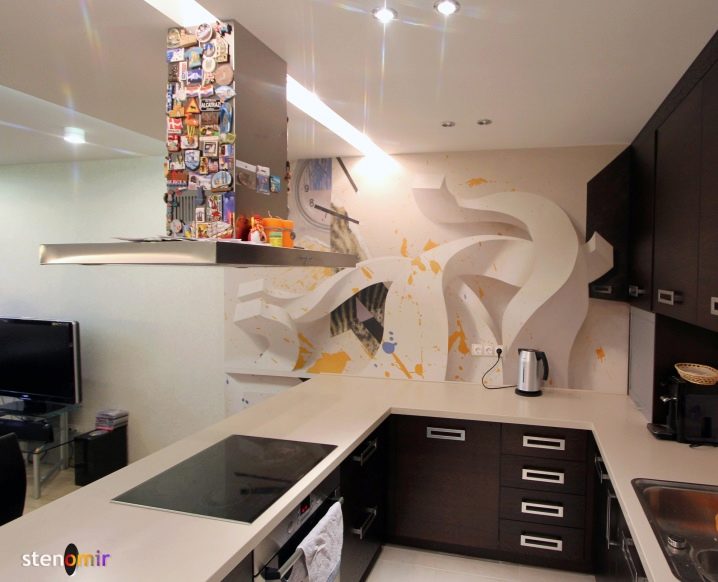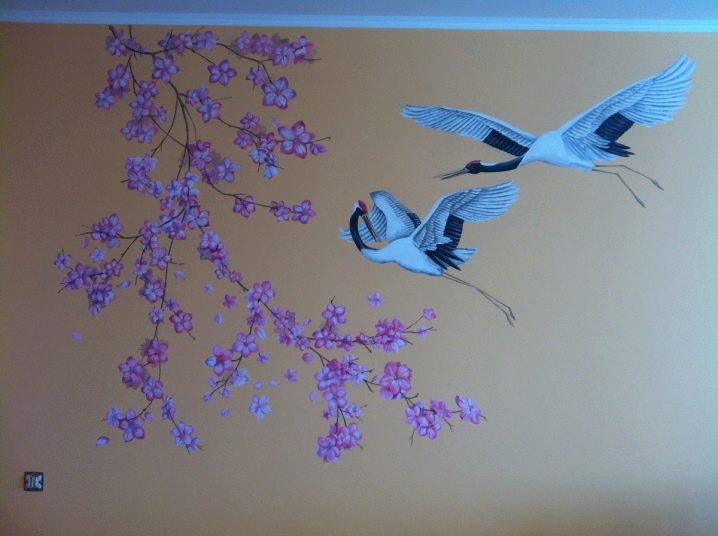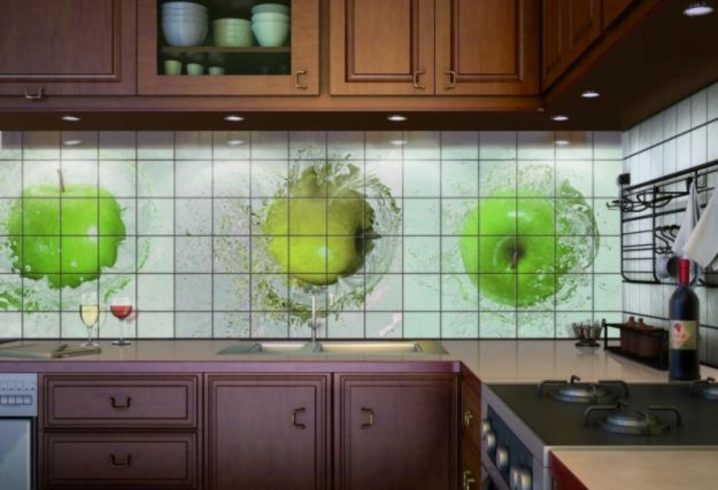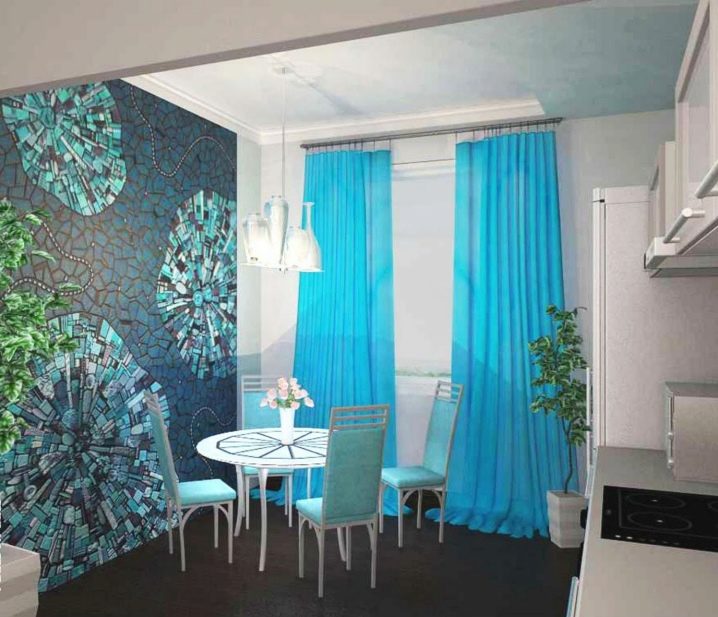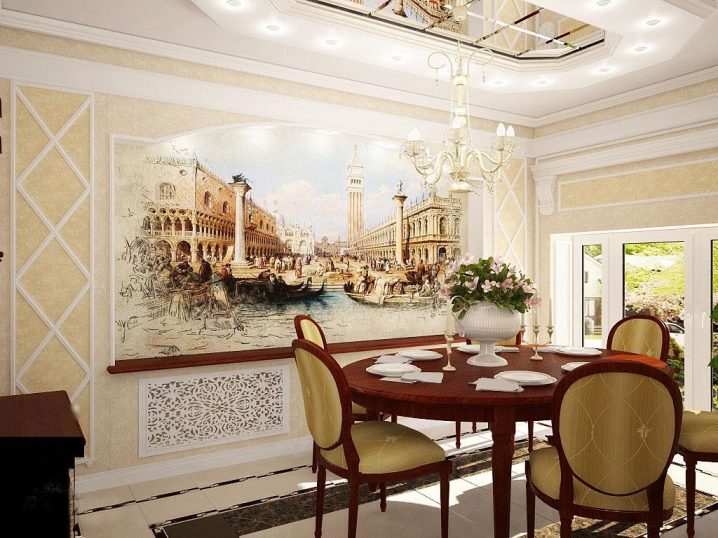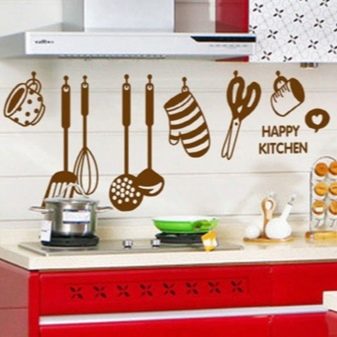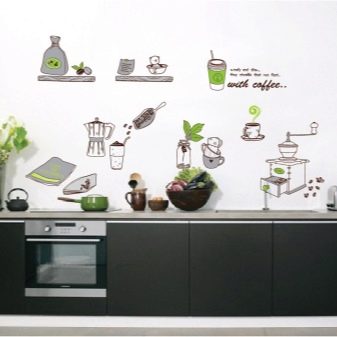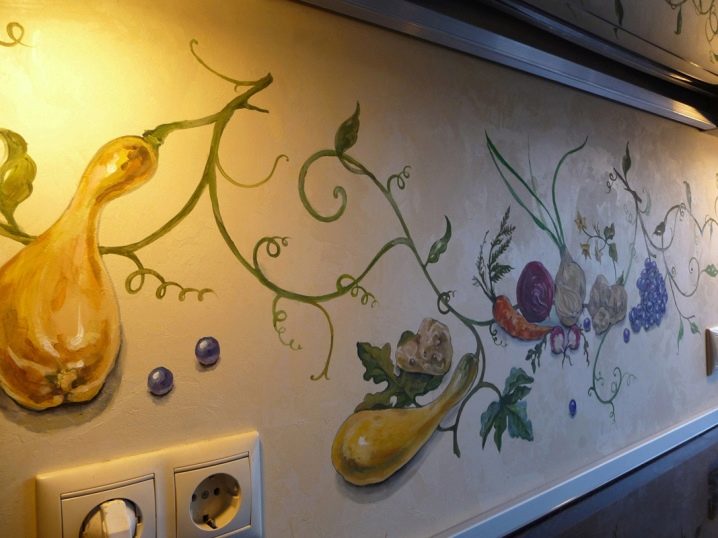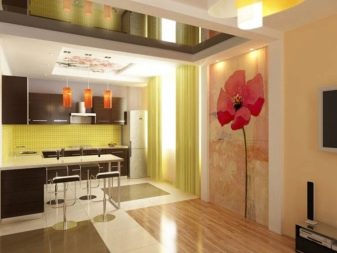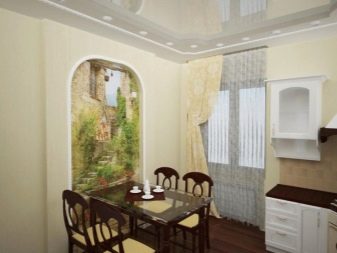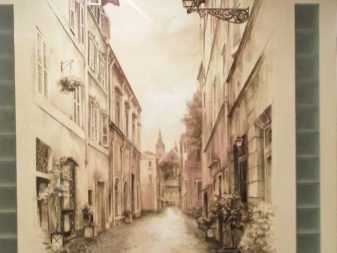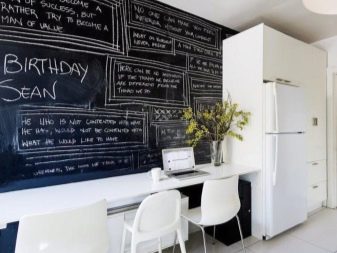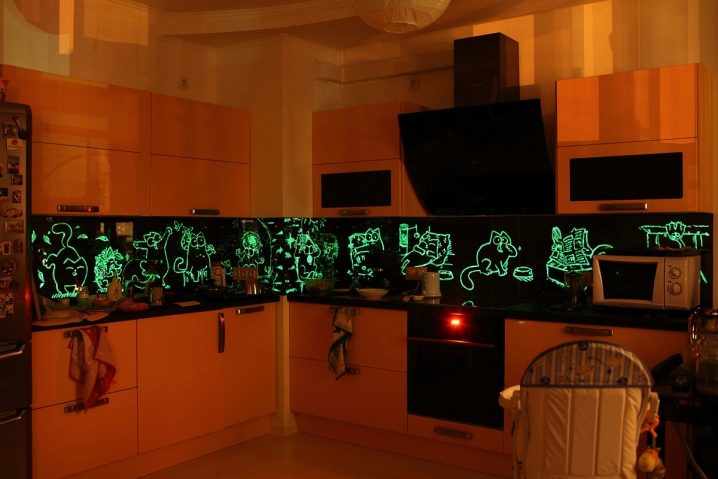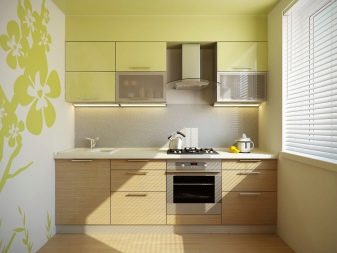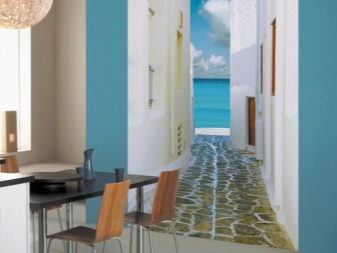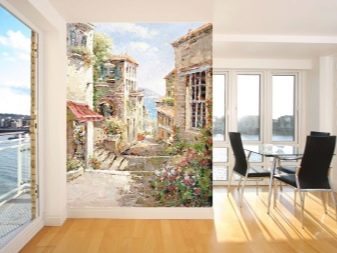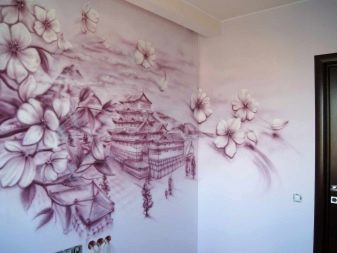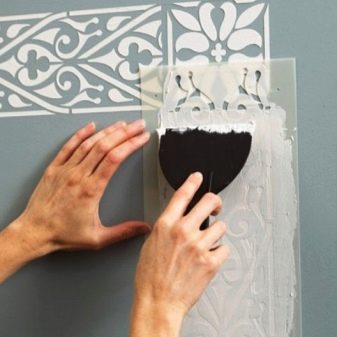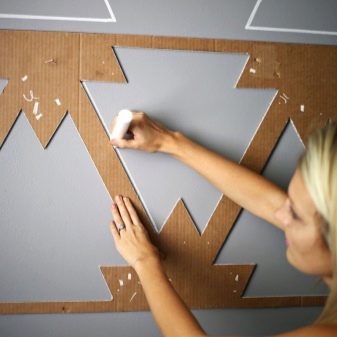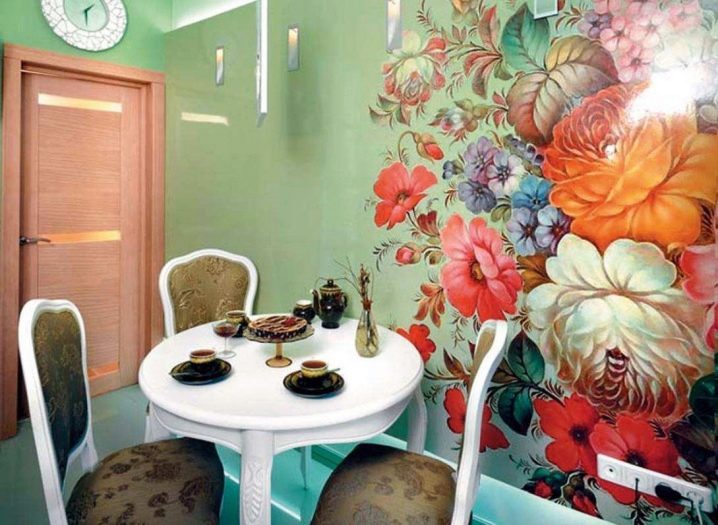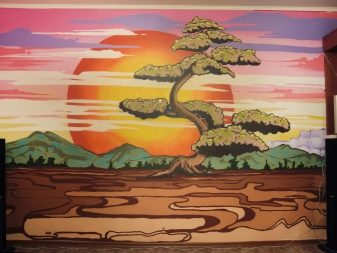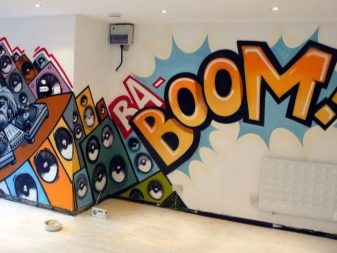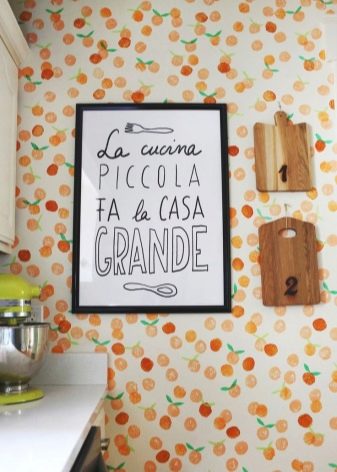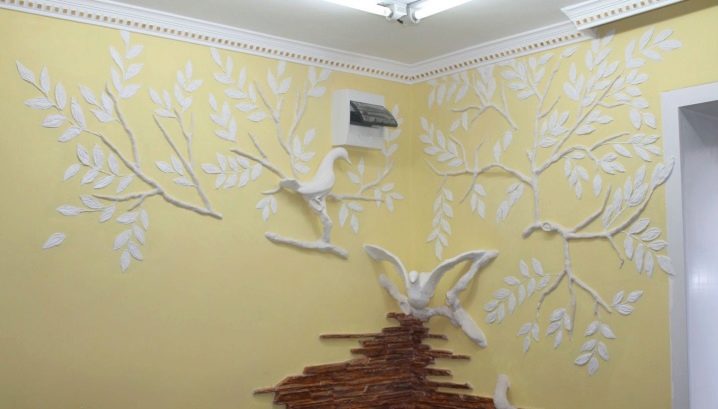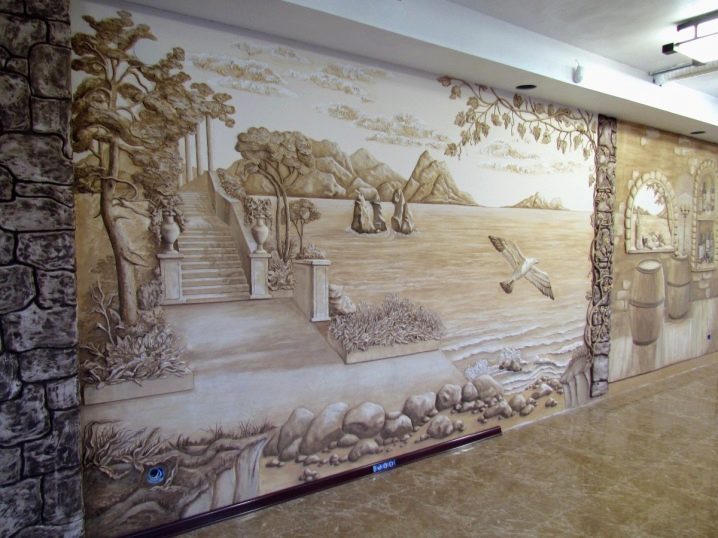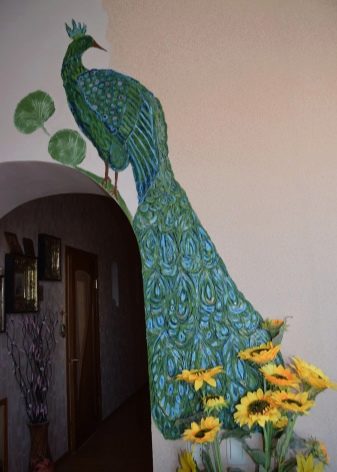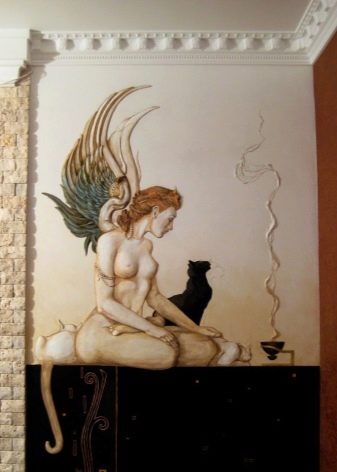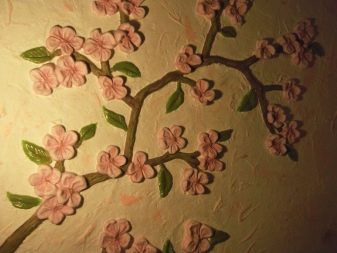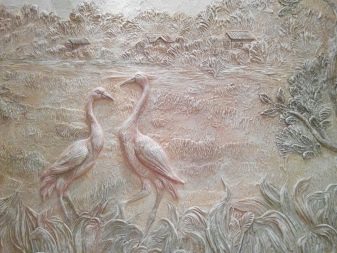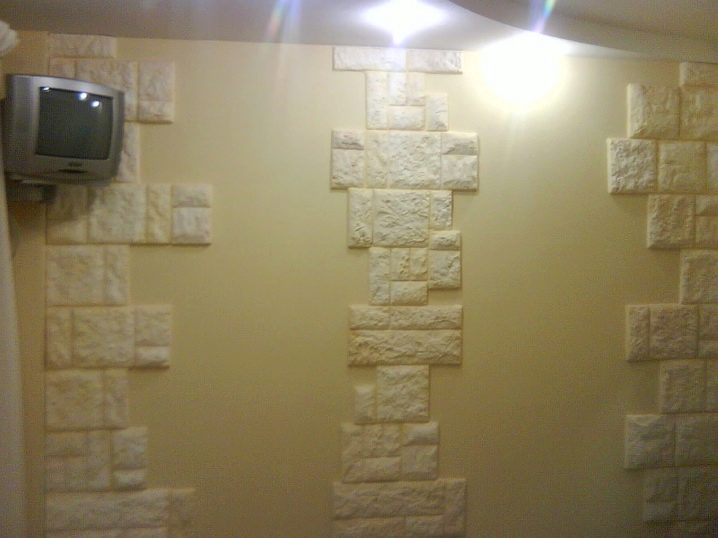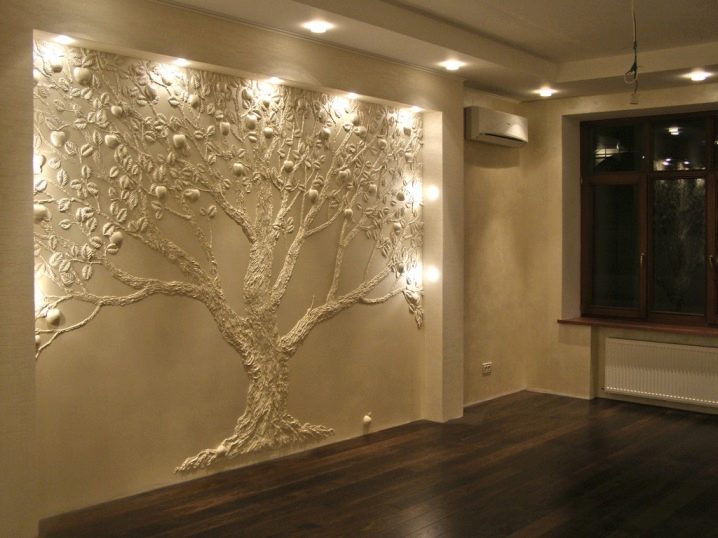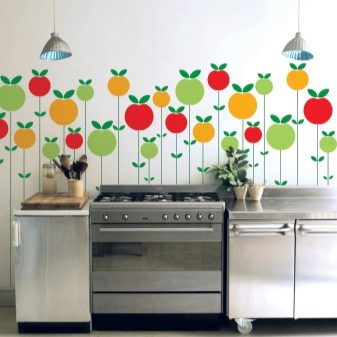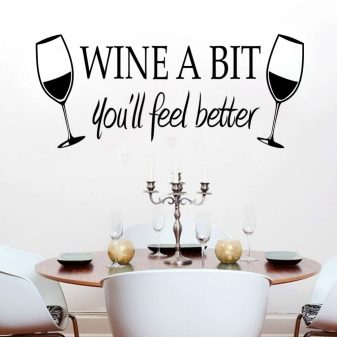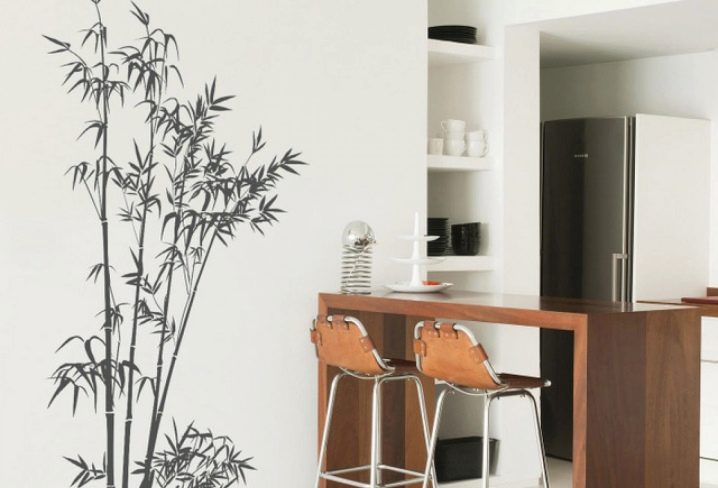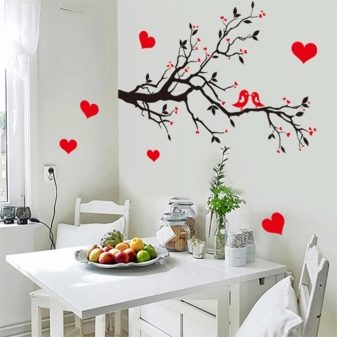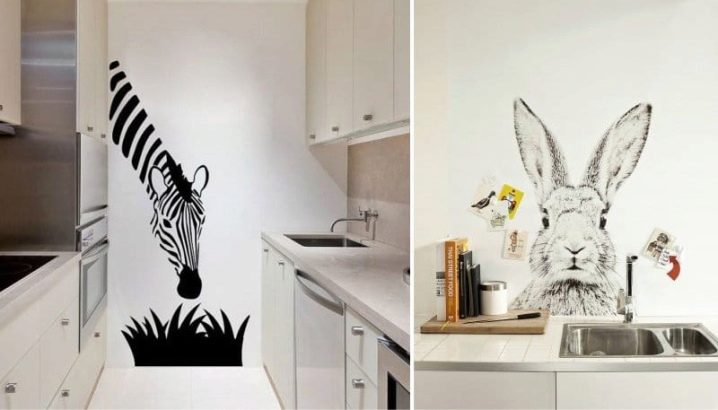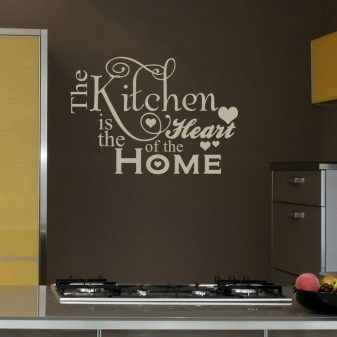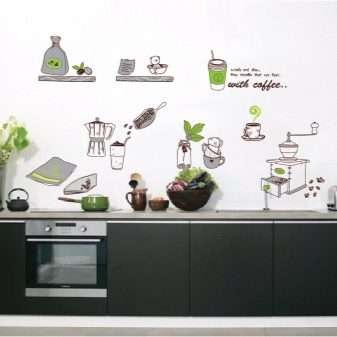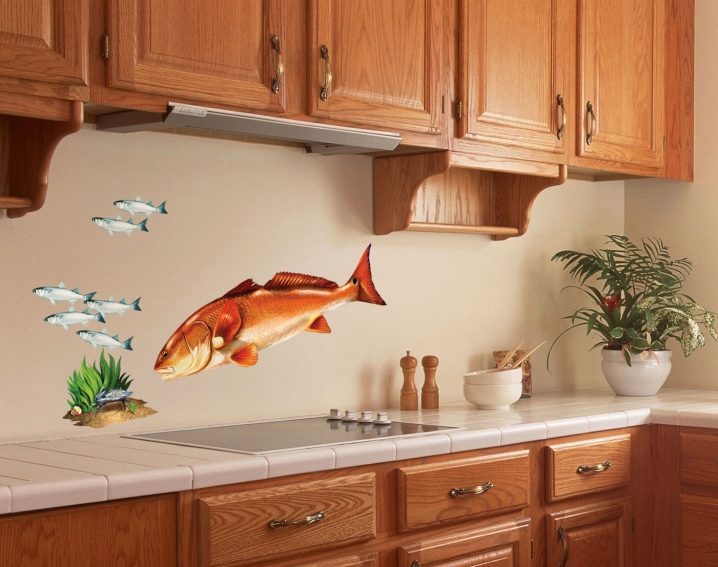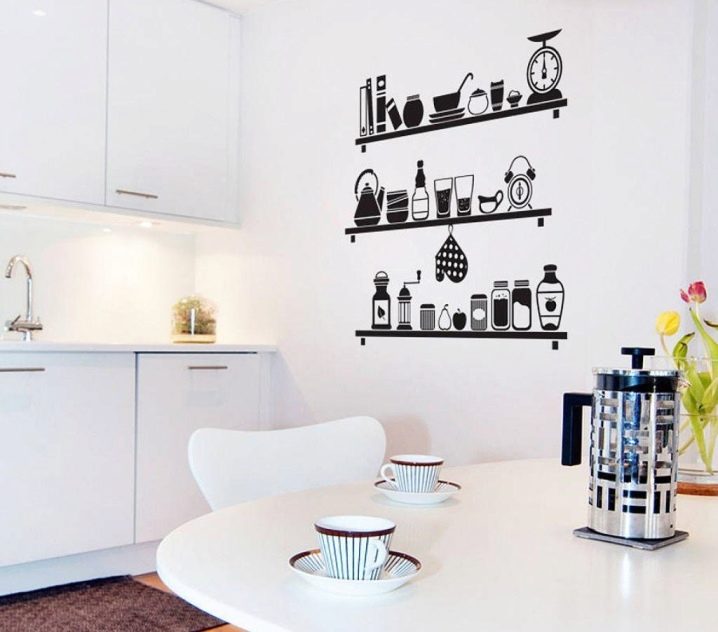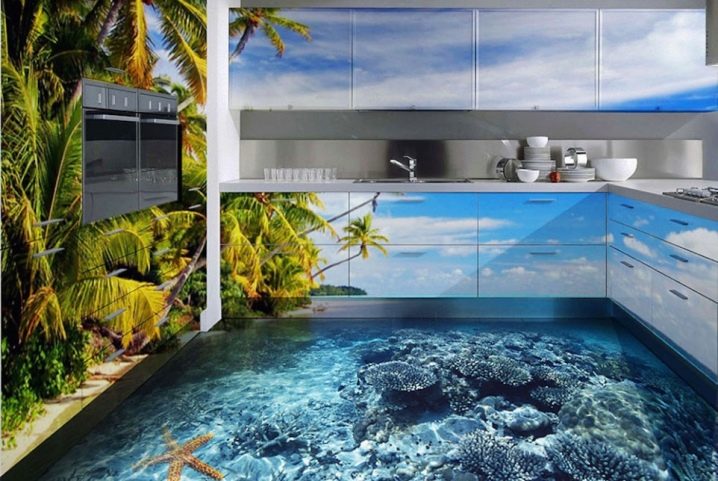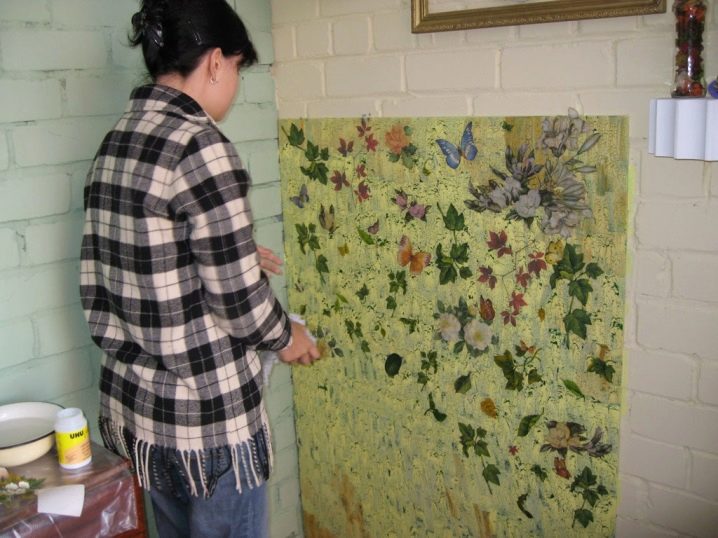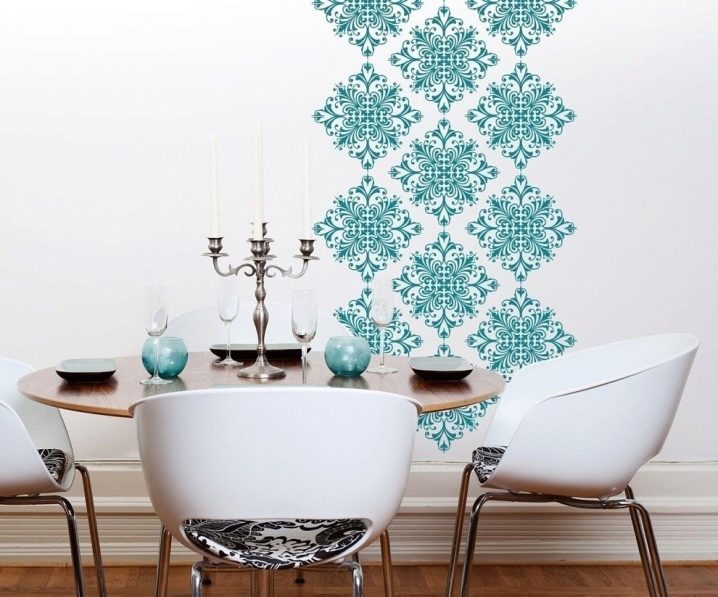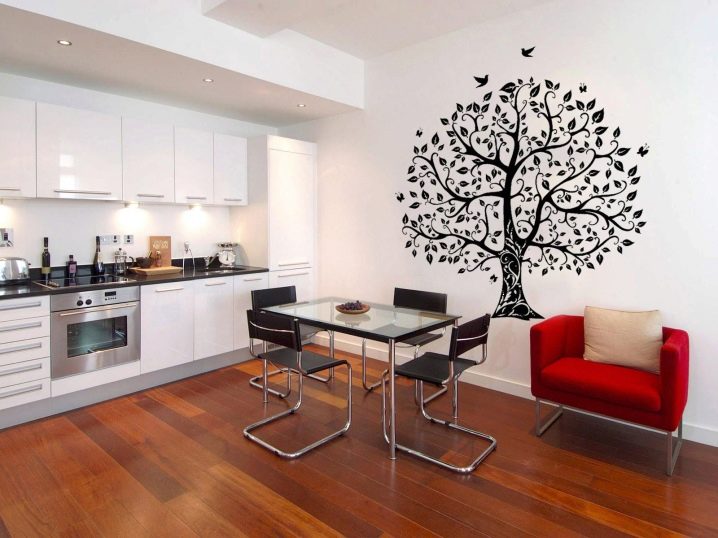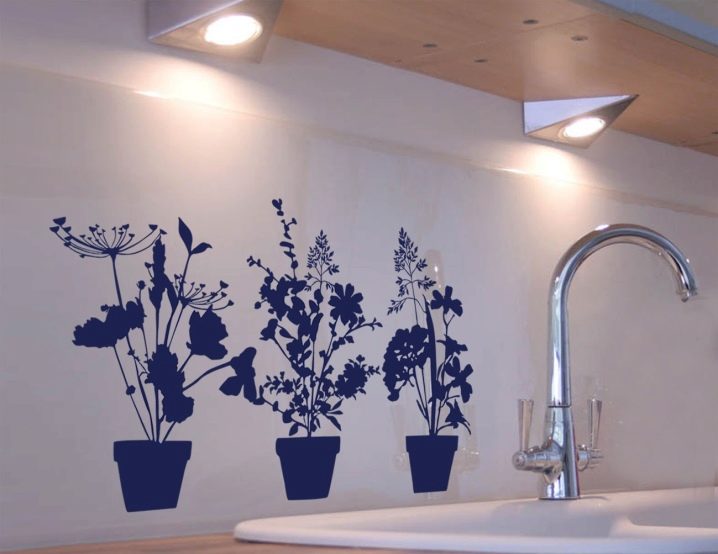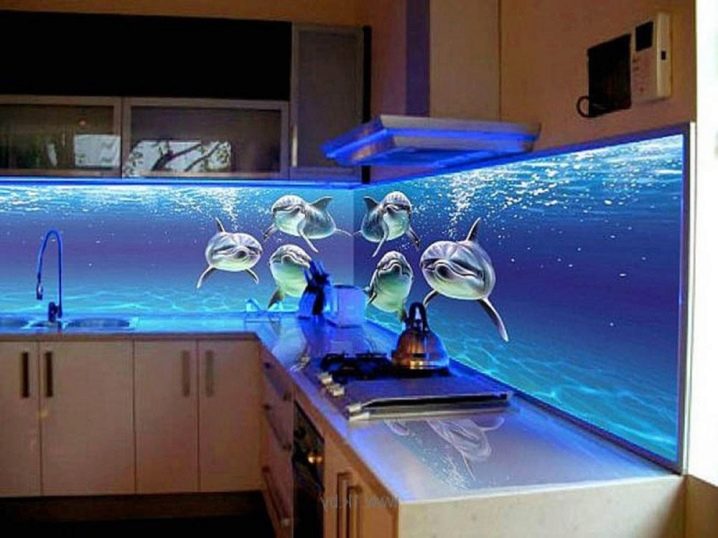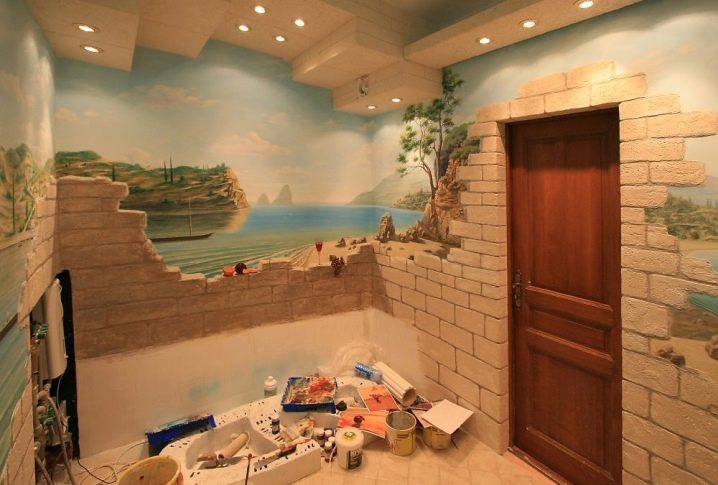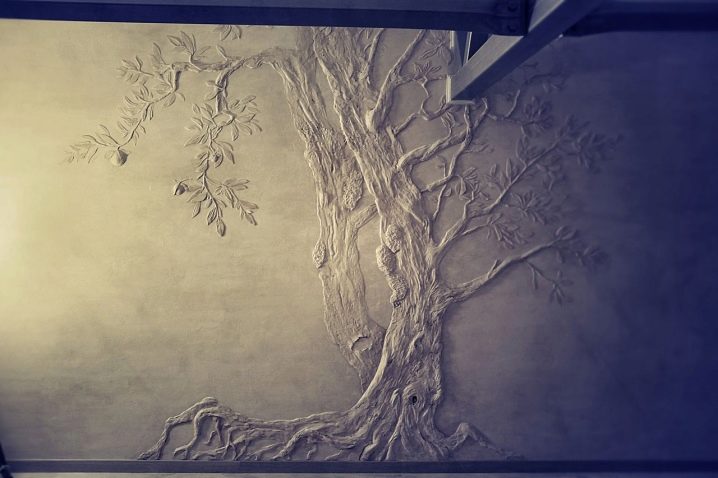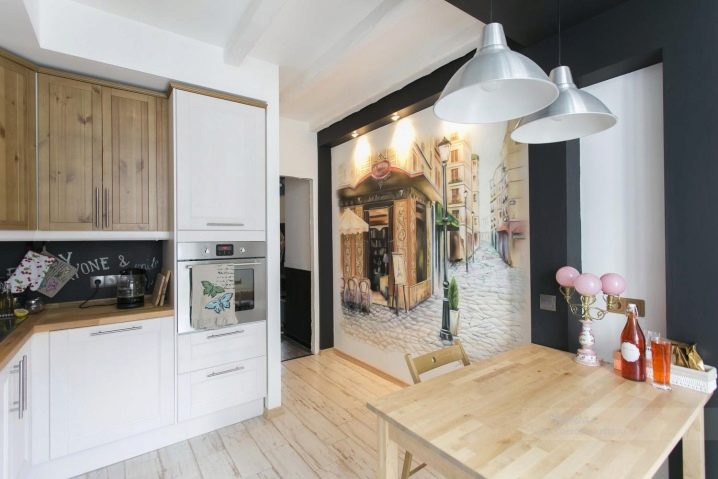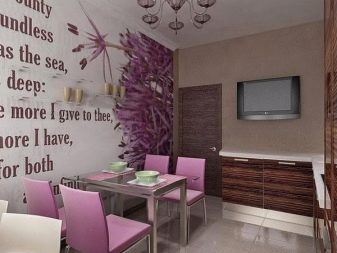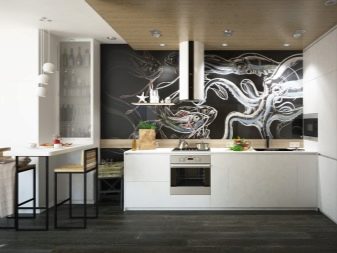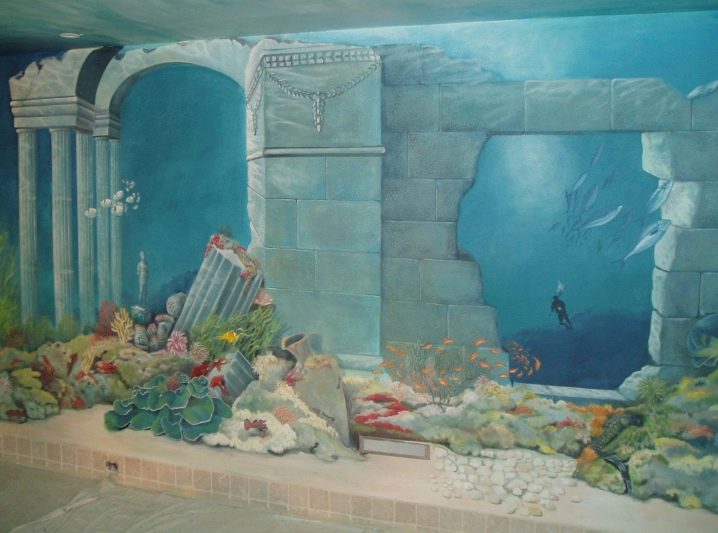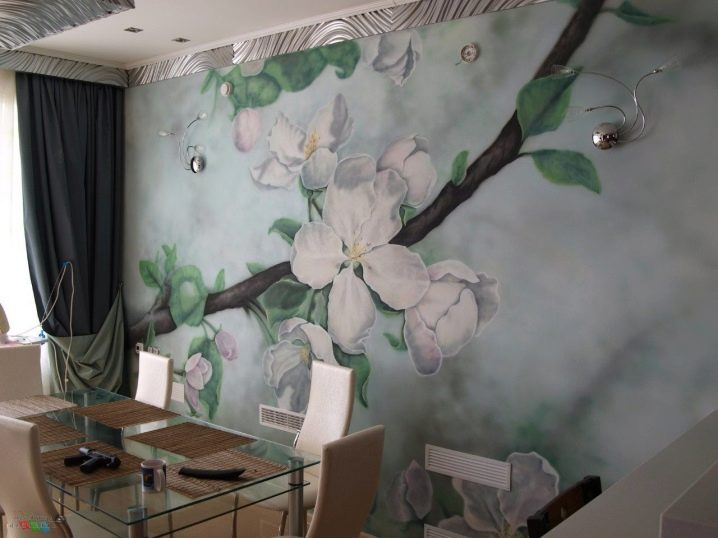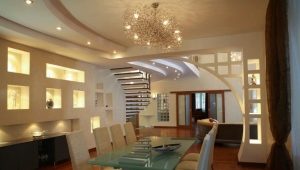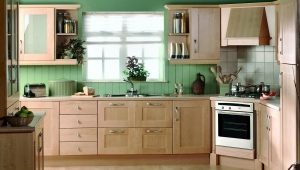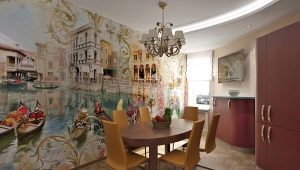Drawings on the kitchen walls
The kitchen is the place where the whole family gathers, so it is important to make it such that it is pleasant and comfortable to be in it. The walls occupy the main space of the room - their decoration deserves special attention. An interesting solution would be the application of original drawings or painting walls. They bring uniqueness and harmony, are easy to apply and, if the picture gets bored, you can always change to another.
Features and benefits
The main advantages of painting on the walls:
- A wide range of colors.
- Special matting paste helps create embossed patterns.
- There is a wide variety of surfaces suitable for pattern painting.
- Figure persists for long. If necessary, you can retouch the damaged parts.
- Drawing can be done independently. The stores sell a lot of templates for every taste, but if you want, you can make the interior unique in its own sketch.
- No professional skills required. In order to create a stencil pattern, it is not necessary to have artistic abilities. You can use ready-made pictures, transferring them to the wall.
- If a hole is formed or chipped, then the picture will organically cover this defect, reviving the wall.
- Huge selection of shapes and types of patterns. Now the range of products offered for wall painting is growing more and more: it includes paints, stencils of various materials, sketches of drawings, and auxiliary materials for more accurate drawing of parts, special pencils, pastes, etc.
- The ability to choose for any design. Moreover, sometimes the painting on the wall itself sets the style of the kitchen.
Styles
Sometimes it is difficult to choose the style of the future drawing and the whole kitchen room. There are many creative trends that give the kitchen a special charm and create a mood:
- Flowers and plants. The view of the summer garden or just painting with flowers give the kitchen a fresh look and visually enlarge it.
- Abstractionism. The conciseness of the forms, straight lines and bright colors will look very modern and stylish in the kitchen.
- Animalism.The image of animals can emphasize the characteristics of the owner and enliven the kitchen room.
- Bar theme: juicy fruits, elite drinks, glasses, as well as cups and grains of coffee, located on the kitchen wall above the table or bar counter look very elegant.
- Ornaments. This style is suitable for the development of ethnic themes, for example, Arabic or Egyptian.
- Old classic style. Pictures made in the style of frescoes, landscapes, views of old streets, sea and village themes, still lifes will do.
- Kitchen theme. Cutlery, plates, cups, teapots, food images - perfectly fit into the kitchen interior.
How to apply yourself?
The first thing to do is to choose a wall (or more than one wall) on which the painting will be made. It is necessary to thoroughly think over the composition in advance so that all the elements relate to each other and convey the artistic intent. It is important to pay attention to the parameters of the kitchen room: in a small kitchen, large paintings will “crush”, and small drawings in a large room will be lost.
Types of drawing on the wall:
- By color: monochrome pattern or multi-color;
- In a form: flat, 3D or with a stucco molding.
- By technique: hand-painted, airbrush, chalk painting, stencils, decoupage.
- Glowing images.
The most common way to decorate walls is painting using stencils, templates, stamps or scotch.
What tools you need will depend on the figure. In order for the work to pass quickly, you need to prepare everything you need for work in advance.
- Brushes. It is best to take a few brushes of different sizes, with different thickness of the pile. You can take three brushes: one wide for drawing large elements, the middle one for more detailed coloring and a small one for painting fine details and lines.
- Stencil. There are templates from different materials. You can buy it ready or make it yourself from soft plastic, thick paper or drawing paper.
- Pencil. You will need it in order to draw a preliminary sketch.
- Paints. Depending on the chosen picture and interior, one or several colors of paint are chosen. For kitchen wall painting, you can choose any paint: water-based, acrylic, oil, paint from a can, etc.(Alkyd and acrylic paints are most suitable for the kitchen because they do not suffer from moisture). Attention should be paid to the thickness of the paint: too thick and too thin can be poorly applied.
Transferring pictures to the wall
Drawing a picture through a stencil has its own technology that helps to apply quality drawing. First, you need to properly clean the wall from the old coating (wallpaper, paint, etc.). Then, it would be desirable to prime the wall so that the paint would better fit. Next, the main background of the wall is applied and the stencil itself is prepared.
The drawing and its color should be chosen in accordance with the interior of the kitchen. Do not use pictures with lots of small details, because they can merge. It is best to apply the paint with a foam sponge, and the stencil to choose from a dense material (cardboard or plastic), so that the edges do not soak and do not spoil the shape.
The second option is how to paint the wall - this is using a spray can. Here things are even simpler, as long as the stencil fits snugly to the wall and the paint does not extend beyond the edges. You can attach it to the wall with masking tape.
Stamps - one of the ways, along with stencils, great for fast painting walls. It’s easy to work with them - the stamp is dipped in paint and applied to the wall. It is important to ensure that the paint is evenly distributed. It is possible to supplement the main ornament with interesting details, contours.
3D drawing. Beautiful embossed design will become an indispensable decoration, especially if it is made with your own hands.
Stages of work:
- Training. Be sure to remove the old wallpaper, paint or other coatings. Then, if necessary, level and plaster.
- Primer wall. A fully primed wall is covered in a basic tone.
- The next step is a sketch. It is better to start with large parts, gradually moving to small parts that are drawn on top of the rest. You can draw directly on the wall with a pencil or translate through a template.
- Then the main thick mass is applied. There are many devices with the help of which it can be done - from a simple trowel, ending with spatulas and needles, for the eruption of small parts.
- The last stage is staining. Here you can add the difference of shadows and color tones.
Modeling
There are many different compositions and mixtures for figure modeling: acrylic pastes (these include gels, latex, crystal paste). The use of gypsum compositions is quite popular, and liquid wallpaper is also used.
Required tools:
- palette knives are used to form small elements;
- conventional paint spatulas are convenient to use when working with stencils;
- Brushes help smooth out roughness and uneven places.
You can break the molding process into two parts: first, apply the base layer, and attach ready-made elements and parts to it.
The easiest way to create such drawings is to apply them with a spatula and stencil. A template is attached to the wall, a mixture is applied with a spatula, after waiting for drying, the stencil is removed and the composition is ready - you can start painting.
Stickers
The best solution for those who do not want to mess with colors will be the use of stickers. Interior stickers are long preserved in their original form, even in the kitchen. A huge number of topics and types of such stickers will allow you to choose a picture for any interior.
Benefits:
- stickers allow you to quickly create an interior without messing around with paints and putties.
- Stickers are made from a special moisture-resistant material, so they are unpretentious in the care and can be used in wet areas;
- The price for them is quite democratic, so you can often change as soon as you get tired of the old design;
- it is easy and simple to work with them: it is cut out and pasted, as it is necessary according to the artist's intention;
- combining is a good move when creating a common kitchen style. Stickers can be placed on different walls, doors or furniture, thereby creating a single composition or collage;
- artistic skills are not required, anyone can create creative pictures.
3D drawing
3D drawings - the last word in the art, they are gaining increasing popularity, because they fill the space with unexpected impressions they can be placed on the floor, and on the walls, and on the ceiling. Using this technique, you can draw a revived texture (fabric, water, stones, grass), or three-dimensional illusions, or animals that seem to stand nearby. Volumetric drawings create an indescribable effect, but to draw such a drawing is not so easy, for this you need to have a skill.
Decoupage
One of the original ways to decorate and decorate a kitchen is decoupage. First, the wall is properly leveled, after which well laid out with glue decoupage details are applied to it. The main thing is to smooth the elements, so as not to leave bubbles and dents. When the image dries, it is coated with varnish, which repels moisture and protects the drawing from damage.
A bitmap is the most difficult method of hand painting and takes the most time and effort. The Point-to-Point technique requires scrupulousness and accuracy, but the panel created with its own hands will delight and please the eye for a long time. Of course, you can apply the picture directly on the wall, but it will be much more convenient to do it on a separate plane. To do this, use either ready-made structured wallpaper, or create an illustration on ordinary wallpaper, and then attach it to the wall.
Interior Ideas
Painting the walls in the interior is always an original decision, there are as many styles of drawings as artists. You can summarize and divide the wall painting into several categories:
- Monophonic or monochrome stencilled drawing is usually performed in one color, drawn on a flat monophonic wall in a contrasting color combination, for example: blue drawing on a white wall.
- The composition of the drawings.These are usually several drawings combined together by one theme. For example, three flower pots painted on an apron in a kitchen look very stylish.
- Glowing pictures will create a special atmosphere not only in the kitchen, but also in the apartment as a whole.
- 3D compositions are more intelligent to entrust to draw a professional artist, because there the most important thing is the game of shadows, without which the “trick” will not work.
- Relief ornaments can be made yourself. They can be of any format: from small fringings and details, to large relief the size of a wall.
In a small kitchen, large drawings visually reduce the space, so it’s best to choose the average size of the drawings.
If you have doubts about your own abilities, you can always turn to an experienced designer who will select interesting pictures and murals, taking into account the lighting, the size of the room and other technical nuances. A professional artist can even create a portrait or a complex collage on the wall.
Images that go from walls to ceiling look incredibly and spectacular - it seems that you are not in the kitchen, but in the depicted space: on the beach, by the sea, etc.
Three-dimensional images also look luxurious and create a unique style.
Using the picture, you can organize kitchen zoning - to separate the workspace from the rest.
